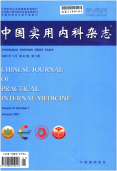中国实用内科杂志2024,Vol.44Issue(4):275-279,5.DOI:10.19538/j.nk2024040103
微移植治疗急性髓系白血病免疫机制
Immune mechanisms of microtransplantation in the treatment of acute myeloid leukemia
摘要
Abstract
In recent years,MST has attracted widespread attention and application in the treatment of hematological malignancies such as acute myeloid leukemia(AML).This technique not only effectively improves the survival rate of AML patients but also possesses the advantages of mild graft-versus-leukemia effect(GVHD),high efficiency,and low toxicity.It represents a therapeutic modality of hematopoietic stem cell transplantation that preserves the recipient's normal immune function.However,the specific mechanisms underlying the effectiveness of MST are not yet fully understood.This article reviews the possible immune mechanisms of MST in treating AML,providing a basis for the optimization and widespread application of MST technology.关键词
微移植/急性髓系白血病/免疫机制Key words
microtransplantation/acute myeloid leukemia/immune mechanisms分类
临床医学引用本文复制引用
郑涵雪,李莉娟,张连生..微移植治疗急性髓系白血病免疫机制[J].中国实用内科杂志,2024,44(4):275-279,5.基金项目
国家自然科学基金(82360029) (82360029)
国家血液系统疾病临床医学研究中心委托课题(2021WWA01) (2021WWA01)
甘肃省科技计划项目临床医学研究中心建设(21JR7RA435) (21JR7RA435)
甘肃省科技计划项目自然科学基金(21JR7RA394) (21JR7RA394)
甘肃省科技计划项目自然科学基金(21JR11RA104) (21JR11RA104)

